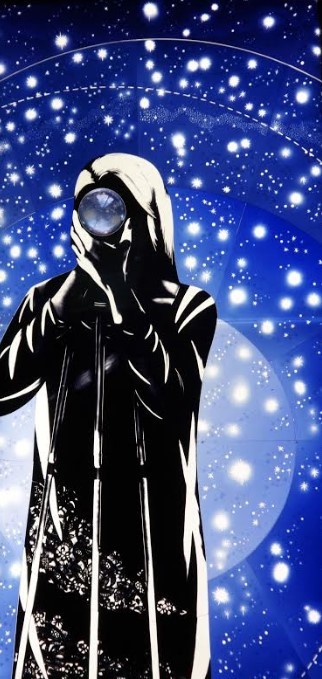Scottish glass artist and harpist Alison Kinnaird marries the ancient art of wheel engraving with contemporary aesthetics and subject matter, insisting that tradition is not a constraint, but a “moving point.” Kinnaird’s latest work, soon to be exhibited as a part of this year’s Edinburgh Fringe Festival, ponders timeless questions by fusing age-old craft processes with the contemporary aesthetics of street art.
The exhibition will showcase Kinnaird's past two years of work, a range of pieces completed in her time between commissions. One highlight is her “Timepiece” series, three engraved glass panels depicting shadowy, anonymous silhouettes against bright backdrops. While past works have seen the artist "painting with light", or illuminating strips of colored glass that are placed behind the engraved piece, her latest panels achieve their vibrancy with flashed glass.
Kinnaird’s last exhibition during 2017’s Fringe Festival was held in her home and studio, a renovated church that lets in enough natural light to bring her work alive. The building, which also houses Temple Records, will again welcome guests for open studio demonstrations during the exhibition this October.
In a telephone interview with the Glass Quarterly Hot Sheet, Kinnaird said she was pleasantly surprised by the number of visitors who ventured twelve miles from the nexus of the 2017 festival.
“I think people enjoy seeing work in a slightly different setting as well, not just in a commercial gallery. Most galleries are just big white boxes and they don’t show glass very well at all,” she said. “People are also really interested to see how the work is done because I think a lot of people think it just happens by magic, they see the visual work on exhibit and it’s amazing, but it just appears there, so they don’t realize how demanding the technique is.”
The "Timepiece" panels were initially inspired by two large lenses that were lying around the studio, which appear as a telescope lens and a camera lens in the works “Astronomer” and “Subway Photographer.' Kinnaird said she was led to the theme of time by interactions with her mother, who recently passed away at the age of 100, and her young grandchildren.
“When you have small children running around and you have a 100-year-old mother, it really focuses your mind on ‘How long are we here for?’ ‘What’s important in life?’ ‘What are the links between generations?’,” she said.
Past works like “Apartment Blocks” and “Streetwise” have had an urban focus, as do two of the artist’s new panels, “Subway Photographer” and “Graffiti Artist.” The former features a figure holding a camera against a background of etched glass lightning sketches, mostly drawn on the subway during trips to New York City.
In a video on the series released by her husband’s label Temple Records, Kinnaird explains that the piece is meant to illustrate the many brief connections we experience as a result of urbanization.
“In the 14th century, the average person met 100 people in their lifetime,” she says. “Now we may meet as many in an hour, moving through our lives, barely touching, just like a subway journey.”
After being turned down from art college, Kinnaird studied archaeology and Celtic studies at the University of Edinburgh, and her fascination with history and artifacts reflects this background. The motifs in “Graffiti Artist” are plucked from carvings on neolithic Scottish tombs and recontextualized as street art. Historically, the markings have a celestial significance, alluding to the timelessness of outer space also referenced in “Astronomer”.
While her home and studio are located just miles outside a major city, they are immediately surrounded by a small village of about 50 houses, and Kinnaird said that her environment in Scotland has likely influenced her perspective on time and history.
“Somebody once said to me that the difference between Scotland and America is that in Scotland we think 100 miles is a long way and in america you think 100 years is a long time, and it’s absolutely true. We have a different perspective on history because it's all there, and people have often tended to stay in the same areas, for example if you have a certain name people can tell where you come from in Scotland. “It's a different sort of culture because America is this wonderful melting pot of people but the native culture never left the same marks that European culture did.”
Kinnaird said her new work ultimately captures both the changes that come with time and the universal continuities in human behavior and experience.
“Here we are a couple thousand of years later still making sense of the same things, and our knowledge grows, but as our knowledge grows we find out how little we know,” she said. “There's always more and more beyond, it gives you an insight as to just how small and brief we are here.”





